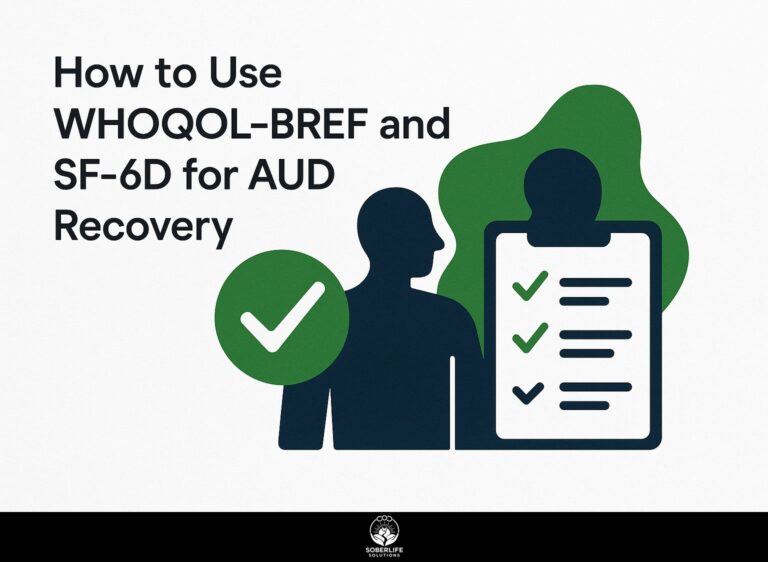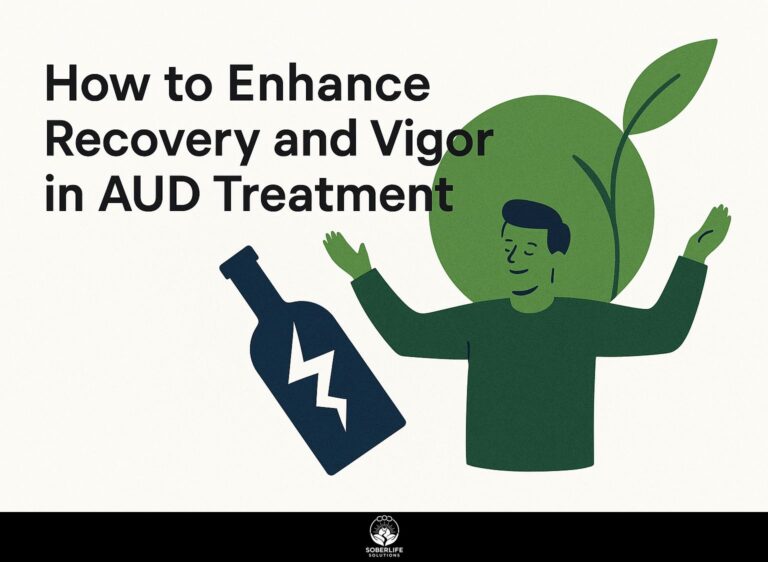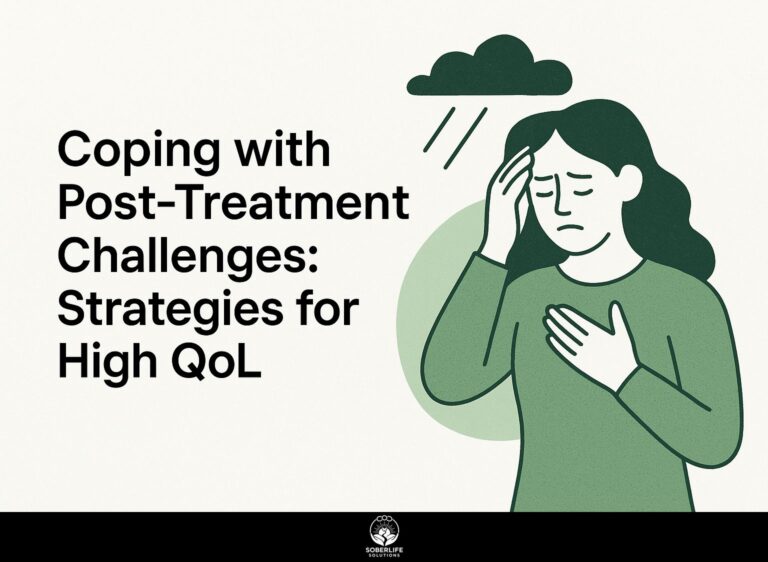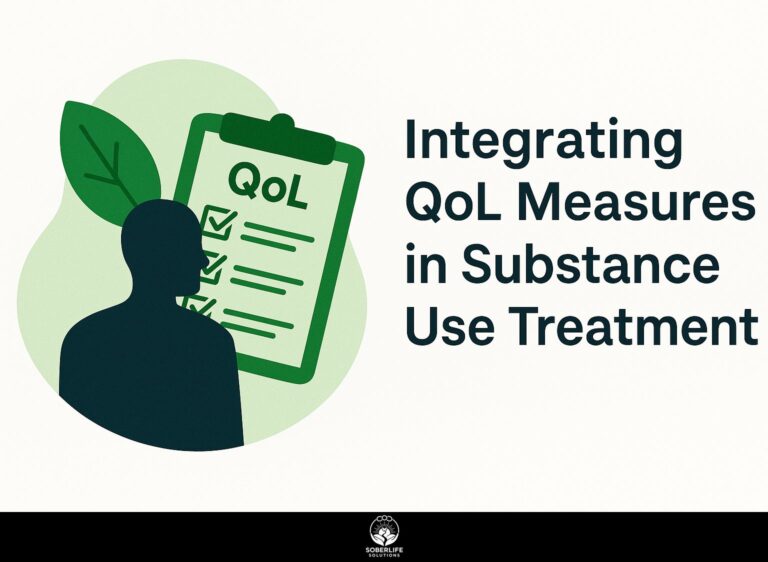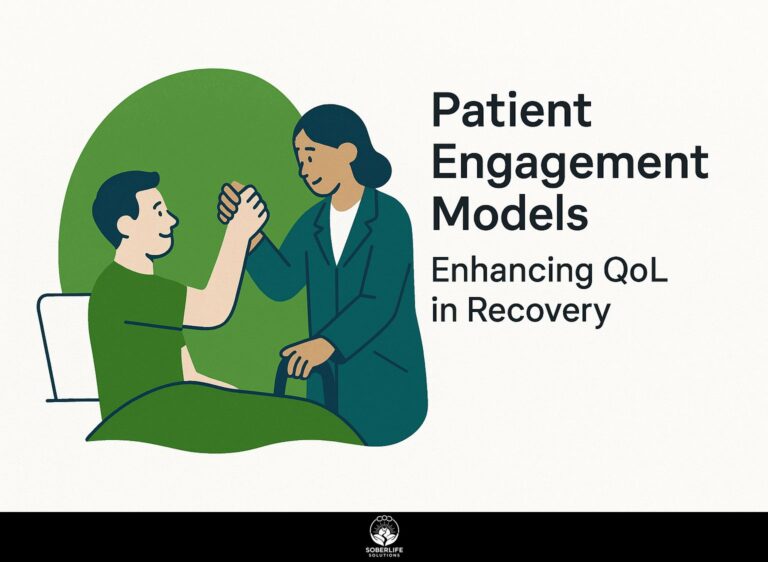Quality of Life Outcomes: Importance in Public Health
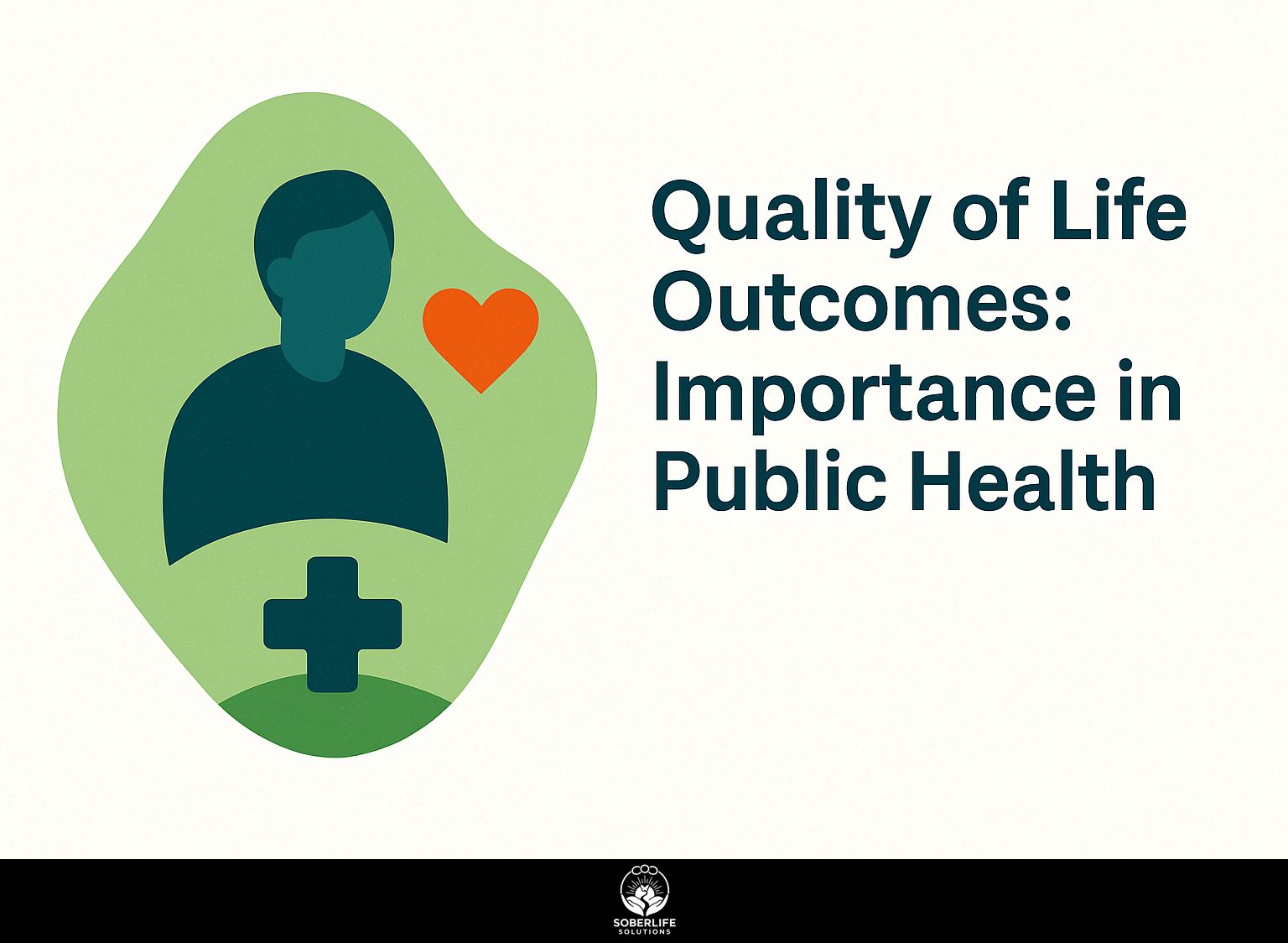
Quality of life (QoL) is an important measure of health results, influencing how we see public health and lifestyle medicine. Looking into health-related quality of life helps us find the important connection between well-being and lifestyle decisions. This article looks at the importance of QoL outcomes in public health and shows how they affect policies and actions. Learn how enhancing life quality can lead to improved health results for both communities and individuals.
Key Takeaways:
Definition and Dimensions
Quality of Life is a global concept measured through various dimensions including physical, emotional, and social well-being, each affecting overall health-related quality of life.
To assess these dimensions effectively, tools like the SF-36 can provide quantifiable data on physical health, yielding scores that reflect overall health status-scores above 85 typically indicate good quality of life. Research published by RAND Corporation highlights the comprehensive nature of the 36-Item Short Form Survey (SF-36) in evaluating health outcomes.
Psychological well-being can be evaluated through methods like the Positive and Negative Affect Schedule (PANAS), which gauges emotional states and overall life satisfaction.
Social relationships are often measured through community engagement metrics, such as volunteer hours or social network evaluations, revealing the strength and quality of connections that contribute to one’s QoL.
Historical Context in Public Health
In the past, public health started to emphasize quality of life, moving away from focusing only on medical results to considering overall health.
This evolution gained momentum with the World Health Organization’s 1946 definition of health, which highlighted physical, mental, and social well-being rather than mere absence of disease.
In the following decades, initiatives like the Healthy People program in the U.S. further established benchmarks for assessing quality of life indicators. Today, public health plans are more often including social factors, focusing on how education, income, and environment affect health.
Strategies now include assessing community health, working together on research, and using culturally aware approaches to improve people’s health, which aligns with findings from the World Health Organization. For more insight, consider how these approaches are integrated into substance use treatment where Quality of Life measures are being increasingly used.
Measuring Quality of Life
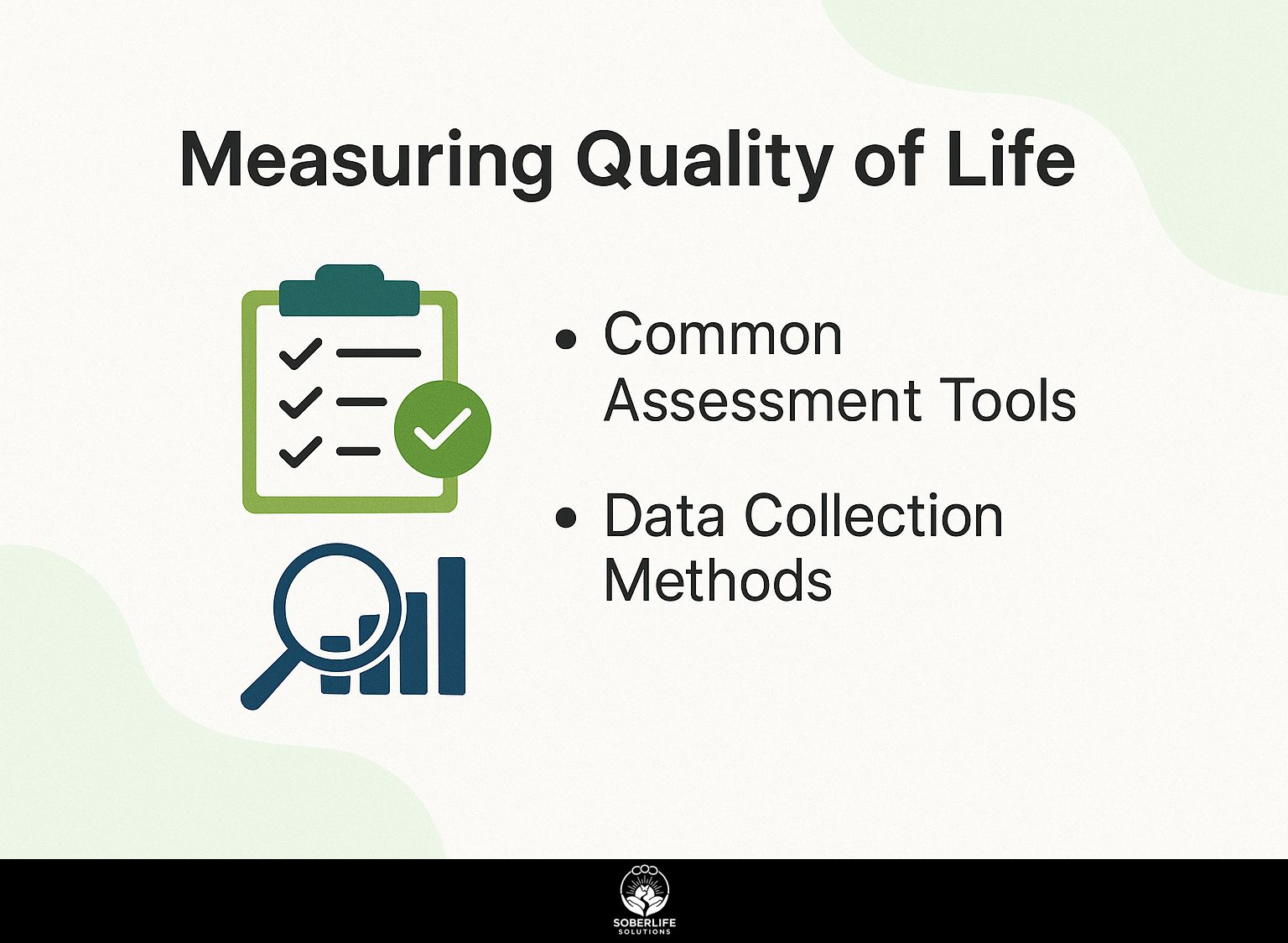
Accurately measuring Quality of Life is important for assessing health treatments and improving patient care outcomes. Integrating QoL measures in substance use treatment can provide valuable insights into the effectiveness of these treatments.
Common Assessment Tools
Tools like the EQ-5D and SF-36 are important for measuring health-related quality of life in different groups of people.
The EQ-5D focuses on five dimensions: mobility, self-care, usual activities, pain/discomfort, and anxiety/depression, using a simple 0-1 scoring system (as detailed on Wikipedia). For example, a score of 0 indicates the worst health state, while 1 reflects optimal health.
The SF-36 includes 36 questions that assess eight areas, providing a detailed overview of physical and mental health. It employs a 0-100 scale where higher scores correlate with better health.
Both tools work well in different situations; the EQ-5D is often chosen for fast evaluations, while the SF-36 gives more detailed information for long-term health issues.
Data Collection Methods
Collecting data for Quality of Life (QoL) assessments uses both surveys to get numerical data and methods like interviews to gather detailed patient feedback.
To effectively gather this data, consider using Google Forms to design structured surveys, ensuring anonymity to increase response rates.
Interviews can bring out personal details; prepare questions that allow for detailed answers to encourage conversation.
To gather a range of views, focus groups provide lively discussions, but they need experienced moderators to handle group behavior.
Observational studies can measure behaviors in real-life settings, but they require careful planning to avoid interfering.
Try to have at least 30 people take part in surveys to get reliable results and a wide range of views in qualitative research.
Impact on Public Health Policies
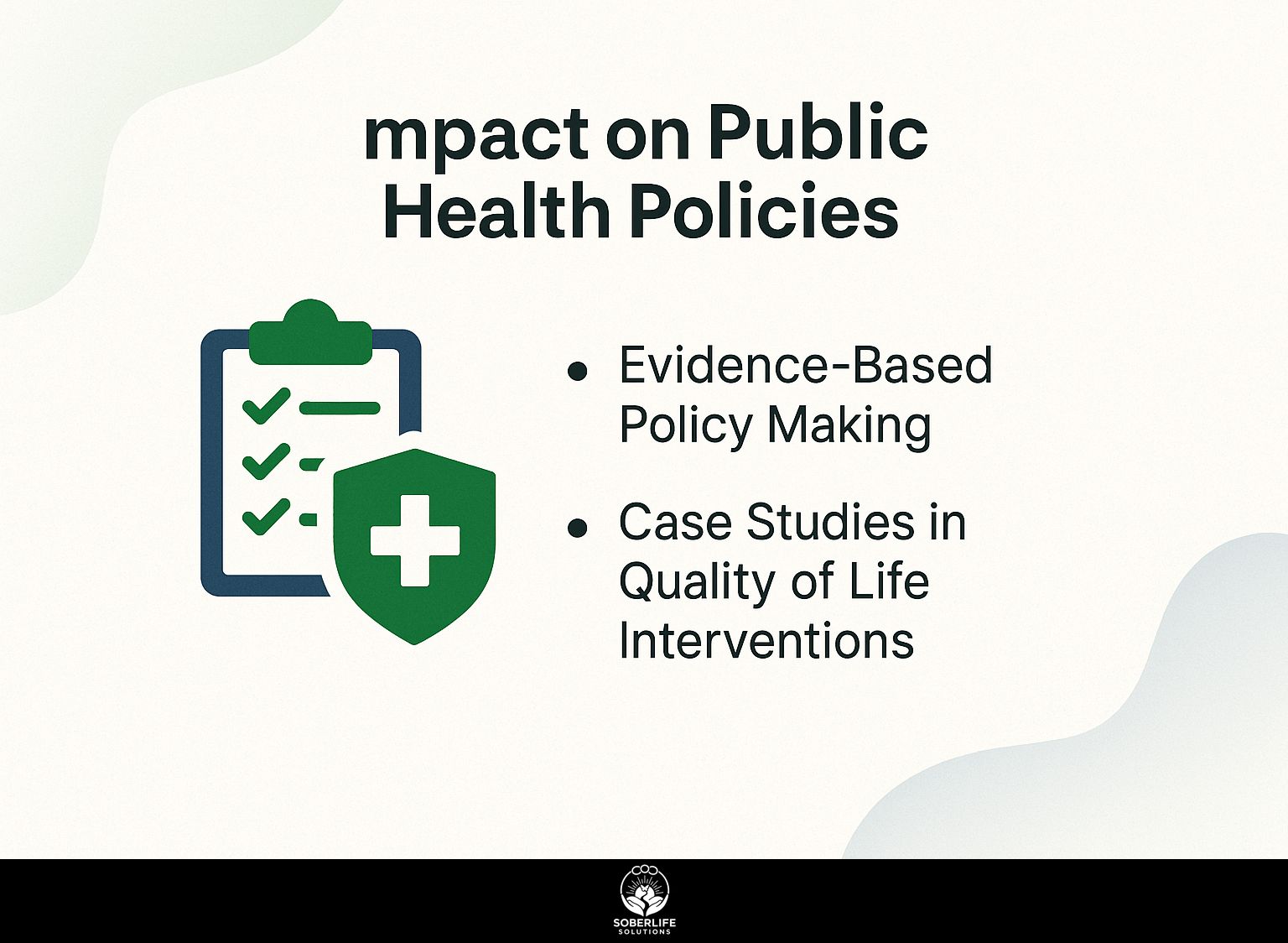
Quality of Life measurements are having a growing impact on public health rules, helping decide where to spend resources and how well interventions work.
Evidence-Based Policy Making
Using quality of life data helps create policies that improve health results and make sure healthcare resources are used well.
For instance, obesity management programs often rely on quality of life metrics to identify at-risk populations and tailor interventions accordingly.
Health providers may consider BMI data and patient feedback to create individual weight loss plans.
Similarly, palliative care programs use QoL feedback to change treatment plans that focus on managing symptoms and providing comfort for patients at the end of life.
Tools such as electronic health records (EHRs) can monitor these measurements over time, allowing healthcare providers to make informed choices that address specific patient needs, leading to better efficiency in the health system.
Case Studies in Quality of Life Interventions
Examples from real life show how efforts centered on improving quality of life can significantly change community health results.
The ‘Healthy Hearts’ program in Atlanta offered diet advice and exercise classes, resulting in a 30% reduction in heart disease risk factors for participants.
Similarly, the `Wellness at Work’ initiative in Seattle integrated mental health resources and flexible work arrangements, leading to a 25% increase in employee satisfaction scores.
Both cases show that specific actions can improve personal health measures and lower healthcare expenses over time. This indicates that investing in initiatives that focus on quality of life could lead to better public health outcomes on a larger level.
Quality of Life and Health Disparities
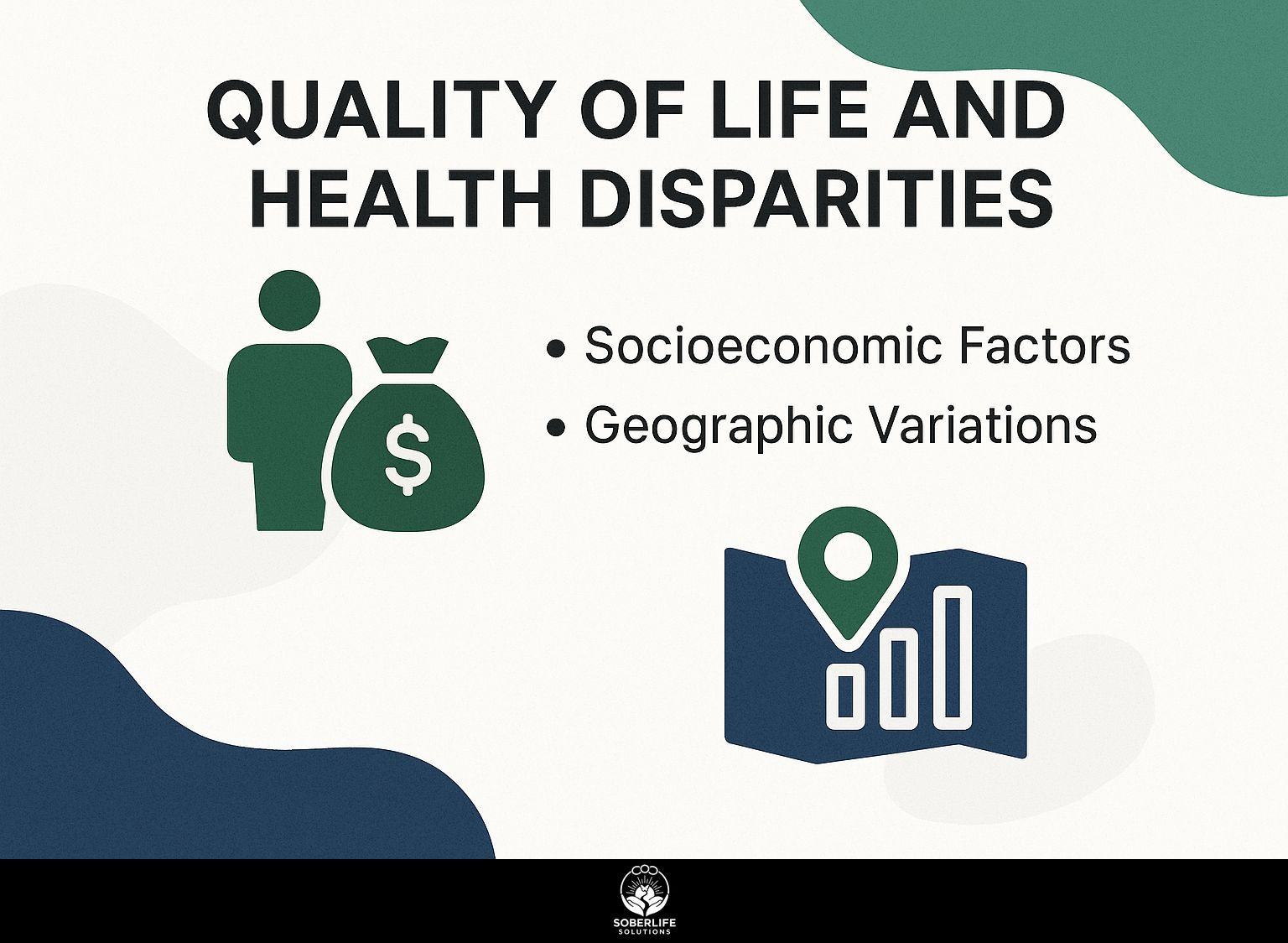
Studying quality of life shows major health differences caused by economic conditions and location.
Socioeconomic Factors
Socioeconomic factors such as income, education, and employment status significantly influence quality of life outcomes across diverse populations.
Research shows that individuals in lower-income groups typically report lower life satisfaction and poorer health outcomes. For instance, a study found that individuals earning below $25,000 annually had a 20% higher likelihood of experiencing chronic stress.
To address these disparities, targeted interventions such as financial literacy programs can equip low-income individuals with skills to manage their finances effectively.
Increasing access to education at community colleges or vocational schools can improve job prospects, resulting in higher income and better living standards.
Geographic Variations
Geographic variations in health-related quality of life highlight the importance of location in health outcomes and access to care.
For example, urban residents often benefit from proximity to hospitals and specialized clinics, with access rates averaging 90% compared to just 60% in rural areas.
Urban areas typically offer more health promotion resources, such as fitness centers and mental health services.
Interventions like mobile health clinics have emerged to address these disparities, bringing essential services to rural populations.
Initiatives that improve telehealth access are very important. They give rural patients the chance to have online consultations and get advice from specialists, greatly improving their overall health care.
Upcoming Developments in Quality of Life Research
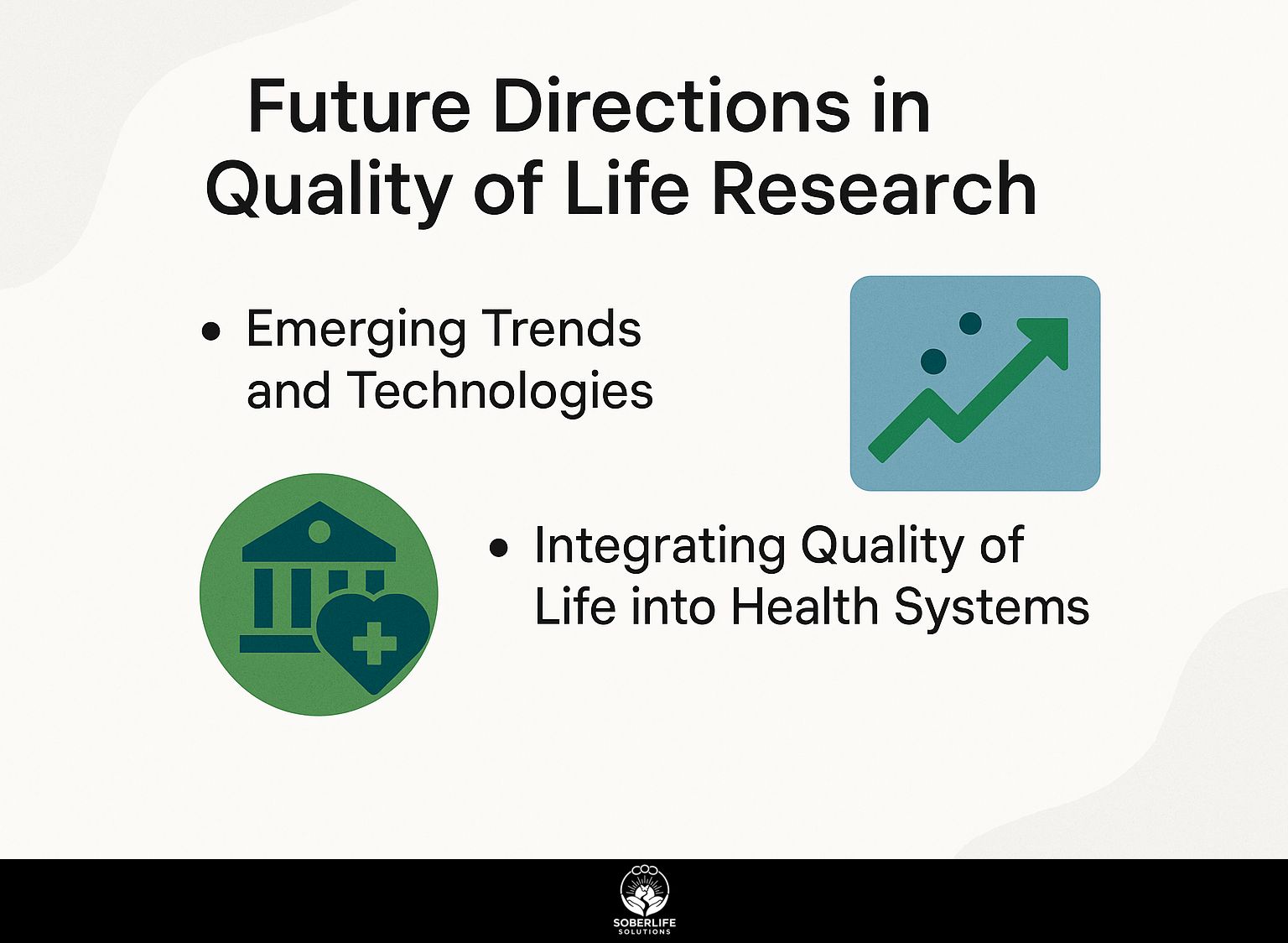
Upcoming research will investigate new trends and technologies that could change how we think about quality of life in healthcare. For an extensive analysis of this trend, our comprehensive study on integrating QoL measures in substance use treatment examines various approaches and their impacts.
Emerging Trends and Technologies
New technologies, like mobile health apps and AI analytics, will improve how we evaluate and understand quality of life.
For instance, apps like MyFitnessPal and Fitbit track daily activity and nutrition, providing immediate feedback on health habits. Users can create their own targets, and the collected data shows trends over time.
Meanwhile, AI analytics platforms, such as IBM Watson Health, aggregate user data to predict potential health issues, guiding preventive measures. Using these tools, people can monitor and improve their well-being, leading to a more informed and proactive approach to managing health.
Integrating Quality of Life into Health Systems
Adding quality of life measurements in health systems is essential for thorough patient care and improved health outcomes.
To successfully use these assessments, health systems should train healthcare providers on the significance of quality of life (QoL) metrics. This could involve workshops and continuing education programs where providers learn to carry out evaluations and understand results.
For instance, the Cleveland Clinic has successfully implemented standardized QoL questionnaires during patient visits, significantly enhancing their care approach.
Creating guidelines for when and how to evaluate QoL can make the process simpler. These procedures make sure departments follow the same methods, making it easier to follow patient progress and results.
Frequently Asked Questions
What are Quality of Life Outcomes and why are they important in Public Health?
Quality of Life Outcomes are measures used to evaluate an individual’s well-being and satisfaction with different aspects of their life. These outcomes are important in Public Health as they help assess the overall health and well-being of a population and identify areas for improvement.
What factors are included in Quality of Life Outcomes?
Quality of Life Outcomes take into account physical, mental, and social aspects of an individual’s life. This can include their overall health, access to healthcare, social support, and emotional well-being.
How do Quality of Life Outcomes differ from traditional health indicators?
Traditional health measurements focus mostly on physical health and the frequency of common diseases, whereas Quality of Life Outcomes provide a wider view of a person’s overall well-being. They consider physical health, social support, and emotional well-being.
Why is it important for Public Health to prioritize Quality of Life Outcomes?
By focusing on Quality of Life Outcomes, Public Health can better grasp the overall health and wellness of a community. This can help identify areas of improvement and develop targeted interventions to improve the overall quality of life for individuals and communities.
What are some examples of Quality of Life Outcomes measures used in Public Health?
Examples of Quality of Life Outcomes measures used in Public Health include the WHO Quality of Life Scale, the EuroQol EQ-5D, and the SF-36 Health Survey. These measures assess various aspects of an individual’s life, such as physical functioning, emotional well-being, and social support.
How can Public Health professionals use Quality of Life Outcomes to improve the health of a population?
By using Quality of Life Outcomes, Public Health professionals can identify areas that need improvement and develop targeted interventions to address those areas. This can make individuals and communities healthier, leading to a better life.

